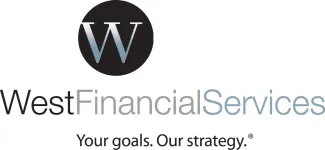
Series I Bonds Final Update: A Stocking Stuffer One Year, a Lump of Coal the Next
We wrote two articles in 2022 about Treasury Series I Savings Bonds, given their popularity that year. At that time, investor interest was well founded as the interest rates offered peaked at over 9% in 2022 on what is a risk-free investment.
With inflation rates coming down, the latest interest rate reset at the end of October offered existing I bond investors a lump of coal in their stocking as 2023 came to a close. According to Treasury Direct, the current composite rate for I bonds is an impressive 5.27%. However, for I bonds purchased in 2021 and through October 2022 – the height of their popularity – they are yielding only 3.94% for the next six months (source: https://treasurydirect.gov/files/savings-bonds/i-bond-rate-chart.pdf).
Why the disconnect? The reason is newly issued I bonds have a 1.30% fixed rate in addition to the inflation adjustment. Due to the low interest environment during the pandemic years, I bonds issued between 2020 and October 2022 have a fixed rate of 0%. Therefore, the inflation component is the only source of yield for bonds issued in those years. With inflation moderating, so too is the yield.
With short term treasury yields above 5%, there is a meaningful pick up in yield for other risk-free assets. You might consider redeeming I bonds from those older vintages to earn a higher return. However, you’ll want to wait to redeem them for at least 15 months from the original purchase. When I bonds are held for less than 5 years, the redemption penalty is the last three months of interest. Waiting at least 15 months allows you to collect a full year’s worth of accrued interest at the higher composite rates.
For investors worried about inflation, I bonds may still have a place in your portfolio. Even the older vintages, with no fixed rate, will never yield less than the prevailing rate of inflation.
In fact, newly issued I bonds with 1.30% fixed rate are a particularly attractive inflation hedge as they will always yield higher than prevailing inflation. For those interested in redeeming older vintages to purchase new I bonds, you’ll want to ensure the interest rate penalty and immediate recognition of interest is worth the higher rate.
Meet Matt Cohen, CFP®, CIMA® »
IMPORTANT DISCLOSURES
West Financial Services, Inc. (“WFS”) offers investment advisory services and is registered with the U.S. Securities and Exchange Commission (“SEC”). SEC registration does not constitute an endorsement of the firm by the SEC nor does it indicate that the firm has attained a particular level of skill or ability. You should carefully read and review all information provided by WFS, including Form ADV Part 1A, Part 2A brochure and all supplements, and Form CRS.
Certain information contained herein was derived from third party sources, as indicated, and has not been independently verified. While the information presented herein is believed to be reliable, no representation or warranty is made concerning the accuracy of any information presented. Where such sources include opinions and projections, such opinions and projections should be ascribed only to the applicable third party source and not to WFS
This information is intended to be educational in nature, and not as a recommendation of any particular strategy, approach, product, security, or concept. These materials are not intended as any form of substitute for individualized investment advice. The discussion is general in nature, and therefore not intended to recommend or endorse any asset class, security, or technical aspect of any security for the purpose of allowing a reader to use the approach on their own. You should not treat these materials as advice in relation to legal, taxation, or investment matters. Before participating in any investment program or making any investment, clients as well as all other readers are encouraged to consult with their own professional advisers, including investment advisers and tax advisers.

